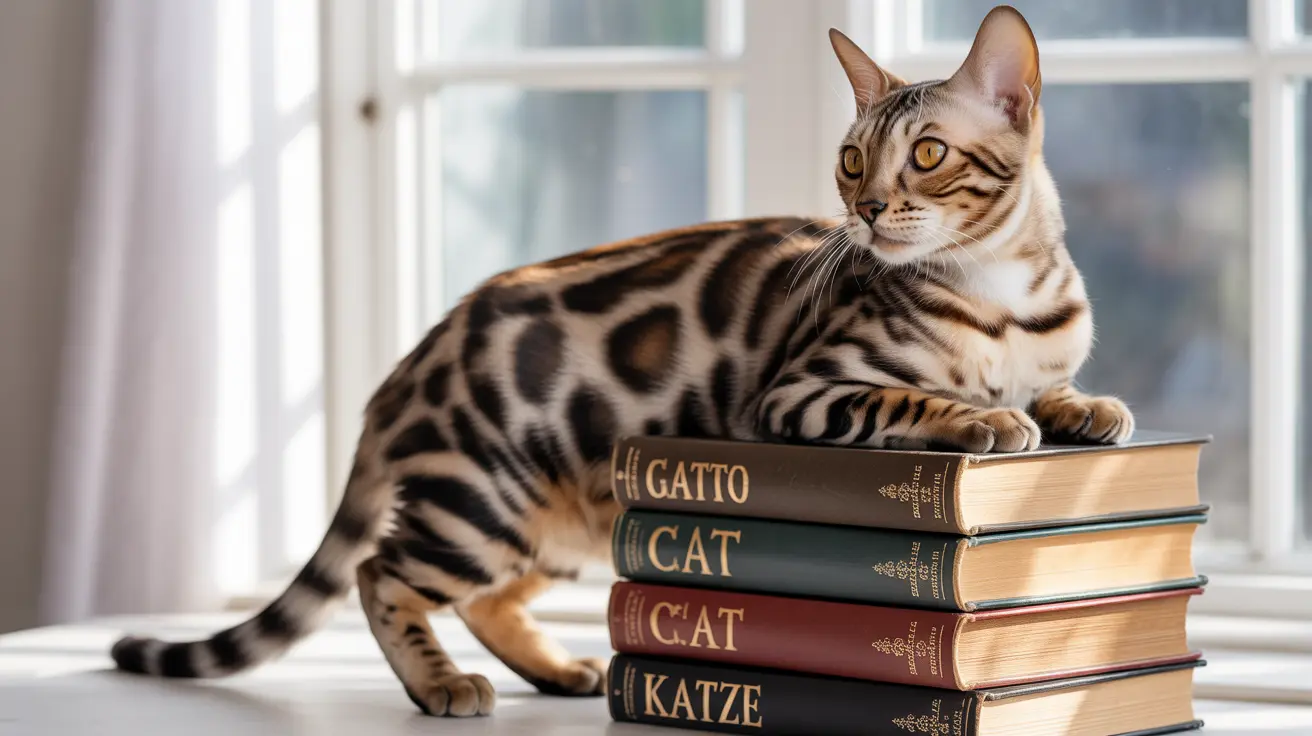Popular European Cat Words and Their Pronunciation
Many European languages share similar-sounding words for "cat," largely due to their common Latin root "cattus." Here are some of the most widely used terms:
- French: "chat" (pronounced as "sha")
- German: "Katze" (pronounced as "kaht-suh")
- Spanish: "gato" (pronounced as "gah-toh")
- Italian: "gatto" (pronounced as "gaht-toh")
- Dutch: "kat" (pronounced similarly to English)
Asian Languages and Their Unique Cat Terms
Asian languages often have distinctly different words for cats, reflecting their unique linguistic heritage:
- Mandarin Chinese: "māo" (猫)
- Japanese: "neko" (猫)
- Korean: "goyang-i" (고양이)
- Thai: "maeo" (แมว)
- Vietnamese: "con mèo"
Cultural Significance and Variations
The way different cultures name cats often reflects their historical relationship with these animals. In ancient Egypt, cats were revered as sacred creatures, while in Japan, the "Maneki-neko" (lucky cat) continues to be a symbol of good fortune. These cultural associations have influenced how languages developed their cat-related vocabulary.
Gender and Age Distinctions
Some languages maintain specific terms based on a cat's gender or age:
- Russian: "kot" (кот) for male cats, "koshka" (кошка) for female cats
- French: "chat" for male cats, "chatte" for female cats
- Spanish: "gato" for male cats, "gata" for female cats
- Most languages also have special terms for kittens, such as "chaton" (French) or "Kätzchen" (German)
Modern Usage and Global Communication
In our interconnected world, knowing how to say "cat" in different languages has practical applications beyond mere curiosity. It helps pet owners communicate with veterinarians abroad, assists international cat rescue organizations, and facilitates cross-cultural exchanges among cat enthusiasts worldwide.
Frequently Asked Questions
How do you say "cat" in the most commonly spoken world languages and how do you pronounce them?
The most common pronunciations include "chat" (sha) in French, "gato" (gah-toh) in Spanish, "Katze" (kaht-suh) in German, and "māo" (like "cow") in Mandarin Chinese. Each language has its unique pronunciation guidelines that reflect its phonetic system.
What are some unique cultural meanings or idioms involving cats in different languages?
Many languages have cat-related idioms. For example, in French, "avoir d'autres chats à fouetter" (to have other cats to whip) means to have other things to worry about. In Japanese culture, the beckoning cat (Maneki-neko) is believed to bring good luck to businesses.
Why do many European languages use similar words for "cat" derived from Latin "cattus"?
This similarity stems from the spread of the Latin language during the Roman Empire. As Romans traded and conquered across Europe, their word "cattus" was adopted and adapted by many cultures, leading to similar-sounding words in modern European languages.
How do gender and age affect the word for "cat" in languages like French and Russian?
Many languages distinguish between male and female cats. In Russian, "kot" is male while "koshka" is female. French uses "chat" (male) and "chatte" (female). Additionally, most languages have diminutive forms for kittens, like "gatito" in Spanish.
What is the significance of cats in Asian cultures, and how do their names reflect this?
In Asian cultures, cats often hold special symbolic meaning. The Japanese word "neko" appears in various cultural contexts, while in Chinese culture, "māo" is associated with both domestic cats and lucky symbols. These cultural associations often influence how cats are named and referenced in these languages.
Conclusion
Understanding how to say "cat" in different languages not only enriches our global communication but also provides insights into how various cultures view and value these beloved animals. Whether you're a language enthusiast, a cat lover, or both, this knowledge adds another dimension to our appreciation of the world's linguistic diversity.






